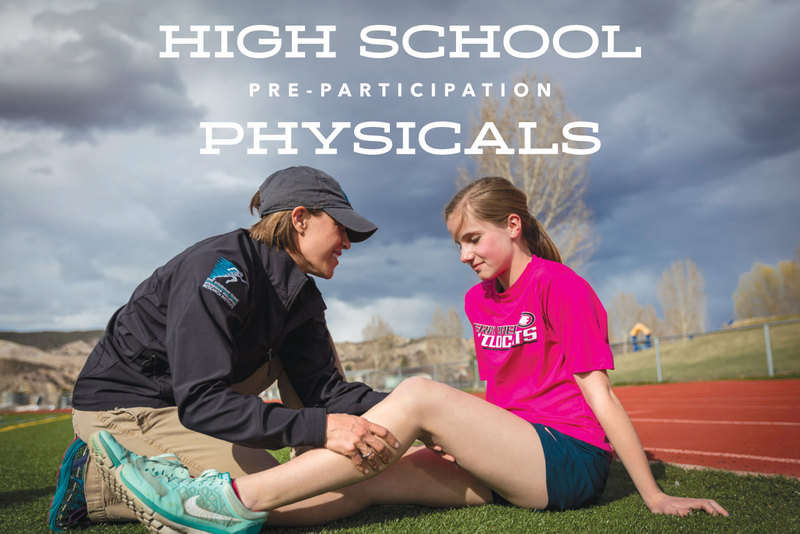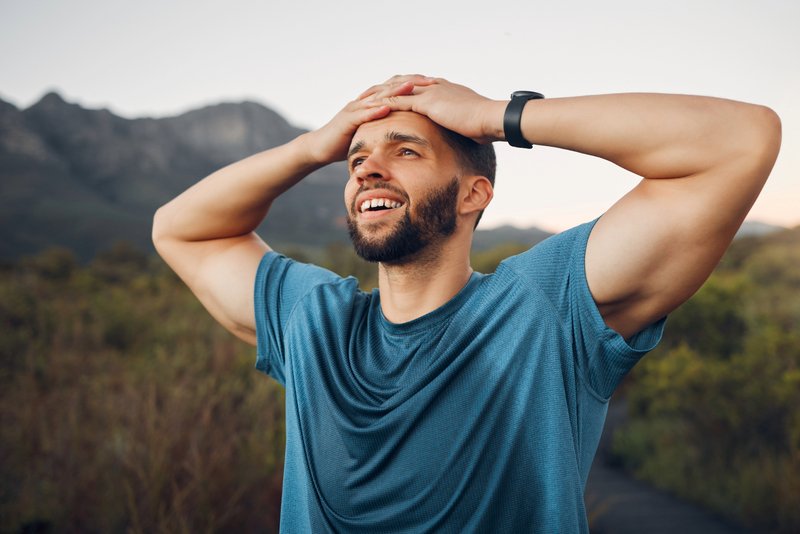News
Going Head First
Some of us take our brains for granted. We don't wake up every day realizing that every small thing we do not just making the coffee and reading the newspaper but every single breath is all possible courtesy of our brain.
If you bang up a leg or arm it definitely hurts and may if severe change the way you do things with that particular part of your body. But if you rattle your brain your entire self is in jeopardy. And all it takes is a few seconds: a single morning on the slopes after leaving your ski helmet in the car or driving a block or two without a seatbelt.
IT CAN HAPPEN IN AN INSTANT
Nobody knows this better than Brian Haygood who suffered a traumatic brain injury while snowboarding 12 years ago. While one of the lucky ones he will never be the same person again.
I'm a different person definitely said the Vail resident who now works for the local VVMC chapter of ThinkFirst a nonprofit organization focused on helping prevent death and severe head and spinal cord injuries. My vision is the biggest thing that's different. I'm missing a bit of it. Cognitively I'm not like I was.
But the fact that Haygood can speak eloquently remember almost everything walk run ride a bike and still snowboard is nothing short of miraculous.
On the fateful day of his accident in 2001 he was on vacation with friends snowboarding near Lake Tahoe.
I remember getting there it had snowed quite a bit that morning he recalled. I looked up the hill and thought I was probably just going to be cruising around with my friends. They weren't as skilled as I was so I just left my helmet in the car.
Haygood met up with some others on the chairlift and talked about going to hit a jump. This is the last part of the day he remembers. He went off the jump and fell backward against a tree hitting his head. Luckily he was quickly airlifted to a hospital where he underwent brain surgery.
I had a craniotomy within the golden hour. That whole response was one critical reason I survived. It's a miracle to look back on that. They put me in a deep coma to control the swelling in my brain. My folks were called to say goodbye to me. They had to come out from Pennsylvania. The chances weren't good of me surviving.
Doctors also predicted that if Haygood did survive he could very likely be in a permanently vegetative state. Instead he woke up nine days later. After months of therapy and rebuilding lost muscle he slowly returned to almost his former self minus depth perception and a certain level of alertness. Because of his miraculous survival and near full recovery Haygood isn't necessarily the most powerful representation of a cautionary tale but he sure does wish he hadn't left his helmet in the car that day.
I truly believe things would have been 100 percent different he said. I wore helmets at that time I just wasn't wearing one that day. You always have to wear it and be prepared. You can't buckle your seatbelt only half the time.
Which brings us to another tale of survival. The story of Jeremy Greene who back in 1999 at the age of 16 and the owner of a fresh driving license picked up some friends for a drive around the neighborhood. He was in the habit of wearing his seatbelt. But he didn't that day.
Going about 35 mph the teenager somehow lost control of the car and hit a tree destroying the vehicle and causing his brain to rattle violently inside his skull. He fell into a coma and didn't wake for three and a half months. He didn't fair quite as well as Haygood but still better than some.
For months he was gradually coming out of the coma said Jeremy's mother Kim Greene chapter director for VVMC's ThinkFirst program. His biggest issue was movement. He couldn't walk. He couldn't use his hands. His speech was very slow and slurred. It still is to this day. The biggest problem he faces now is extreme fatigue. He has a lot of balance problems and walks with a limp. If you were to meet him you would know he's had a brain injury. He's had trouble keeping jobs but he is a very serious artist and is graduating from CSU this spring. He feels he's lucky but a simple thing could have prevented it.
In Jeremy's case there is plenty of evidence supporting this truth. His friend in the car that day was wearing a seatbelt. Although he was on the side of the car that endured the worst impact and he was welded inside the vehicle he walked away virtually uninjured.
This kid was pushed up under the dashboard. The Jaws of Life had to cut him out of the car. I saw that kid in the emergency room. He came up and talked to me. He had a scratch on his knee Kim Greene said. I can remember seeing Jeremy in the hospital with tubes and everything coming out of him. He looked fine. No broken bones. His face was fine. The only injury he had was to his brain.
THE BEST CURE IS PREVENTION
Now it is Greene's life purpose to educate individuals especially young people about the importance of protecting their brains. It's a mission that fits right in with VVMC's ThinkFirst program.
We focus on kids because they don't think these things will happen to them Greene said. People say things happen for a reason. So maybe now our purpose is to educate as many people as we can.
According to ThinkFirst more than half a million people per year sustain permanent brain and spinal cord injuries in the United States. Greene said that as part of the program she and colleagues at ThinkFirst will periodically go out on the mountain at Vail and count how many skiers and snowboarders are wearing helmets. She said on a good day it's about 75 percent.
A helmet will potentially prevent a minor head injury and potentially let someone have a minor head injury versus a major head injury said Dr. Barry Hammaker trauma surgeon at Vail Valley Medical Center. In a high-speed accident the deceleration will injure the brain. There are so many that we see that we don't know what the result would be if the person were wearing a helmet. Essentially the helmet's job is to absorb the impact.
Anyone who has broken a helmet or had their bell rung while wearing one and then blinked a few times and been okay knows how necessary a helmet is. It does bear noting though that a helmet should be replaced after it sustains any type of significant impact.
We can fix a lot of things broken bones internal organ injuries but we're not very good at fixing the brain Dr. Hammaker explained. The brain essentially has to heal itself. Sometimes it can do that well other times not so much. There are lingering problems. Mohammed Ali is the best example. He's a mess.
Basically with the current helmets available for skiing and snowboarding there is no downside. Not only do they protect you but they do a better job than any hat in keeping your head warm.
Injury is the leading cause of death among children and teens. The most frequent causes of these injuries are motor vehicle crashes violence falls sports and recreation. ThinkFirst is dedicated to preventing those injuries whenever possible especially for kids and teens through education research and policy. For more information visit thinkfirst.org or call VVMC's chapter director Kim Greene at (970) 477-5166.
Every year the VVMC chapter of ThinkFirst:
Reaches 9259 people.
Has 59 presentations and 15 events.
Distributes 174 ski and 772 bike helmets.
Performs hundreds of car-seat fittings.
More News
-
New!
More

Vail Health and The Steadman Clinic Offer Free Physicals for High School Athletes
Physicals will be offered in both English and Spanish on two dates, May 17 at Battle Mountain High School and May 24 at Eagle Valley High School.
-
New!
More

Good Stress?
“Good stress” sounds like an oxymoron. After all, we’ve always been told stress is bad for our health. However, it’s possible that some stressors can actually be good for us and even enhance our lives.
-
More

Considering Cosmetic Procedures
As we age, our skin loses its elasticity and can leave some feeling less confident in their physical appearance. Cosmetic procedures can empower individuals to enhance their self-esteem and improve their overall quality of life.
